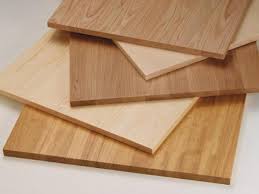Sungkai Wood for Furniture and Flooring

Sungkai wood stands out as a premier choice for both furniture and flooring, showcasing exceptional durability and beauty. Imagine exquisite pieces crafted from a naturally stunning material—this is the allure of Sungkai. This article delves into the properties, benefits, and applications of Sungkai wood, addressing common concerns and illuminating the pathway to creating outstanding furniture and flooring projects. We’ll explore how Sungkai’s characteristics address design, performance, and sustainability needs, alongside providing insightful examples.
Understanding Sungkai Wood
What is Sungkai Wood?
Sungkai wood is a tropical hardwood, renowned for its exceptional strength and durability. Originating from Southeast Asia, primarily Indonesia, it offers a rich, warm aesthetic that complements various interior design styles. Its natural beauty often requires minimal finishing, further enhancing its appeal. Recognized for its remarkable resistance to decay, Sungkai is an ideal choice for projects requiring long-lasting and resilient materials. The properties of Sungkai wood make it an excellent choice for both furniture and flooring applications. Its natural oils and inherent strength contribute to its exceptional performance, making it a popular choice for a variety of applications.
Applications of Sungkai Wood
Furniture Craftsmanship
Sungkai wood’s resilience makes it an exceptional choice for furniture construction. Its strength allows for the creation of sturdy and long-lasting pieces that withstand daily use. The rich grain patterns of Sungkai lend themselves beautifully to a scope of furniture styles, from modern minimalist designs to traditional ornate pieces. A notable example is its use in creating high-quality dining tables, where its strength and stability are essential. The exquisite beauty of Sungkai wood surfaces makes these pieces stunning statement pieces for any home.
Sungkai Wood for Flooring
Enhancing Interior Spaces
Known for its high durability and aesthetic appeal, Sungkai wood makes a superb flooring option. Its natural beauty adds a touch of elegance to any room. The strength and stability of Sungkai wood allow it to handle heavy foot traffic and high-impact environments, such as commercial spaces or households with active children. Examples include its suitability for use in high-traffic areas of hotels and offices or in homes with multiple pets or young children. The inherent water resistance of this wood makes it an exceptionally durable option, further enhancing its appeal for flooring applications.
Sustainability and Sungkai Wood
Responsible Sourcing
The responsible sourcing of Sungkai wood is crucial. Many companies prioritize sustainable forestry practices to ensure the long-term availability and ecological viability of this natural resource. By partnering with sustainable suppliers, manufacturers are able to guarantee the ethical and environmentally responsible production of Sungkai wood furniture and flooring. This also protects the rainforest habitats of the region where the wood is sourced. These practices support a sustainable future while respecting the environment. Many manufacturers prioritize sustainability, ensuring that the production process respects the environment and contributes to the health of forests.
Comparison with Other Woods
Evaluating Properties
Sungkai’s strength often sets it apart from other hardwoods. Compared to other tropical hardwoods like teak or mahogany, Sungkai might offer a more cost-effective alternative without sacrificing the beautiful aesthetic. While other types of wood may be more readily available, the durability and resilience of Sungkai make it a compelling choice for discerning consumers. These comparative analyses are crucial in making informed design decisions.
Q2: How Does Sungkai Compare to Other Wood Choices for Furniture and Flooring?
The durability and attractive aesthetic of Sungkai offer a compelling case for its use in furniture and flooring. Compared to other hardwoods, Sungkai is frequently found to be a more economical choice without compromising the excellent qualities desired in these products. The sustainability of Sungkai also contributes to its positive profile. If you’re looking for resilience in a wood, Sungkai’s properties make it a favorable option.
Q3: What are the Typical Costs of Sungkai Wood Products?
Prices for Sungkai wood products can vary widely depending on factors like the size and type of the product, the quality and finishing of the pieces, and current industry trends. In general, Sungkai wood is considered a moderate-cost option compared to other highly valued hardwood species. A consultation with a supplier or retailer of Sungkai wood will allow for a precise estimate.
Q4: Where Can I Find Sungkai Wood Products?
Sungkai wood products are often available from specialized retailers or importers specializing in hardwood materials. Online industryplaces and direct collaborations with manufacturers can also offer a variety of options and pricing. studying suppliers and retailers who highlight sustainable sourcing practices is highly encouraged.
In conclusion, Sungkai wood’s exceptional qualities make it an excellent choice for furniture and flooring. Its durability, natural beauty, and sustainable sourcing options offer a compelling combination for both homeowners and businesses. If you’re looking to integrate this remarkable wood into your projects, we encourage you to contact us. We offer expert consultations, detailed quotes, and personalized solutions to meet your unique needs, guaranteeing the optimal experience for your specific project.
